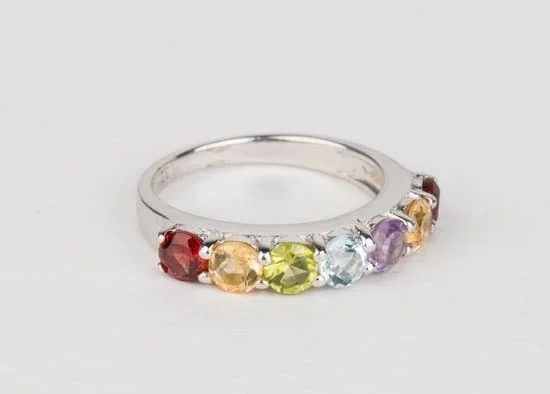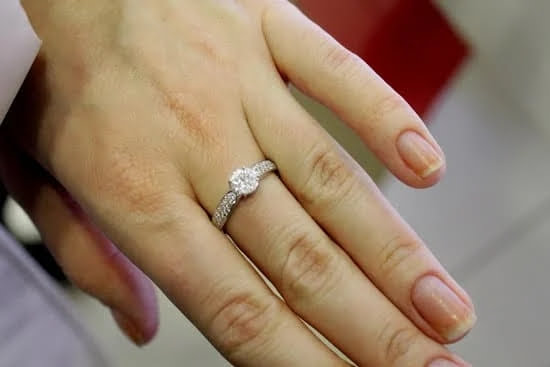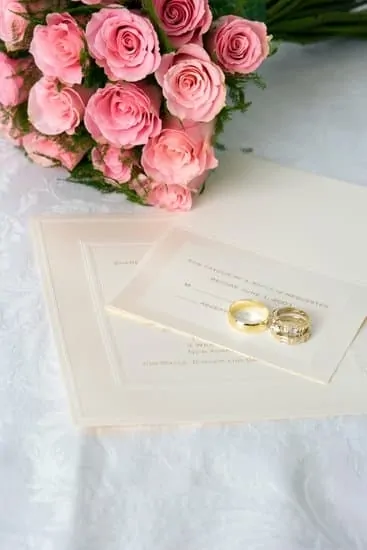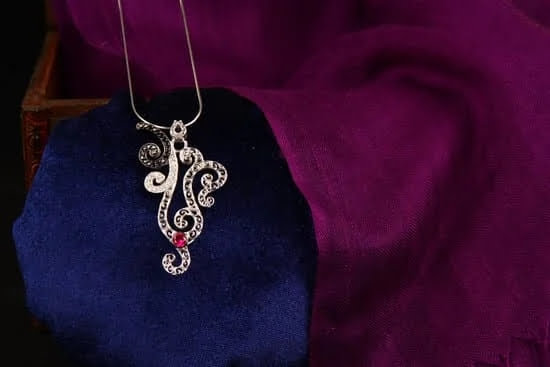Hard metals are popular choices for jewelry because they offer a solid, long lasting and attractive look. They often have luster and shine that is unmatched by other surfaces. There are several different metals that fall into the “hardest” category but there are a few in particular that stand out due to their strength, durability, and beauty. Platinum, titanium, stainless steel and tungsten carbide are considered to be some of the hardest metals used in jewelry making today.
Platinum
Platinum has been used in jewelry for hundreds of years and is well known for its durable and luxurious finish. It can be shaped into bold shapes with intricate detailed accents without losing its strength or structural integrity.
Its popularity is due to its brilliant white color that won’t tarnish over time or require any added plating processes to make it look new again. Platinum is resistant to scratches which makes it very appealing when looking for something classy and timeless.
Titanium
In recent years titanium has become one of the most popular choices for jewelry because it offers great strength along with lightweight comfort. It is incredibly strong and resistant to corrosion which makes it ideal for everyday wear pieces like rings, bracelets, watches and necklaces without worrying about damage or chipping away quickly.
Titanium also takes on many cool finishes from mirror-polished dark blue to muted gunmetal grays depending on how it’s processed making this metal piece quite versatile in design possibilities as well as durability factors.
Stainless Steel
Stainless steel is another metal that falls into the “hardest” category when it comes to metal choices for jewelry construction. Similar in characteristics to platinum, this metal does not corrode easily like some other metals may do so it offers a higher level of protection against damage caused by water, sweat or body oils etc.
Additionally stainless steel pieces age gracefully since unlike other materials they do not need polishing frequently to keep their luster while still being lightweight enough so they’re comfortable enough to wear all day long if desired.
Conclusion: The Popularity of Hard Metals For Jewelry Crafting Today
Overall hard metals such as platinum, titanium, stainless steel and tungsten carbide have become increasingly popular choices among jewelry makers because they offer unrivaled strength yet remain lightweight at the same time. They look beautiful when finished with intricate details while still remaining scratch resistant compared to some softer metals so they hold up longer over time when worn regularly making them an ideal choice for any style preference whether you’re looking for something subtle or statement-worthy..
Different Types and Qualities of Hard Metals
Metals are an integral material used in making jewelry. The most popular metals for making jewelry include 18-karat gold, sterling silver, and platinum. But not everyone can afford gold and silver, in this case more durable metals like titanium, stainless steel and tungsten carbide can be used.
Titanium is one of the most popular hard metals for making jewelry due to its strength and durability. It is lightweight, does not corrode easily, and has a futuristic look to it.
Titanium rings come in various styles with different finishes and settings making them perfect for people who desire unique items of jewelry and statement pieces. The only downside to titanium is that it cannot be soldered or resized which means you cannot alter a piece once it’s been made.
Tungsten carbide is another type of metal that is becoming increasingly popular as a material for jewelry. It is extremely hard-wearing and resistant to scratches which makes it an ideal choice for rings, watches and bracelets that need to withstand everyday wear-and-tear. Tungsten can be polished to a high shine that makes it incredibly eye-catching but it cannot be resized or soldered meaning any alterations would need to be done by machine.
Stainless steel is also gaining popularity as both a cost efficient option along with being stylish as well as durable option for making high quality jewelry pieces such as rings, earrings, pendants and even watches because of its resilient nature against scratches or dents when compared to other metals like gold or silver.
While it has great durability against everyday wear-and-tear it remains relatively affordable when compared with other luxury options such as platinum or white gold – although some customization might be limited due to these type of changes involving heat treatments which could potentially cause damage if put into contact with stainless steel products.
Advantages and Challenges of Using Hard Metals in Jewelry
When it comes to metals, those that are harder are often the hardest to use in jewelry making. These hard metals include steel, titanium, tungsten and platinum. Steel is a strong and lightweight metal that is quite popular for rings and other jewelry pieces. It has a shiny silver-like finish, doesn’t scratch easily, and is also corrosion-resistant.
Titanium is also quite popular for jewelry pieces due to its strength and durability. It will not corrode and can last much longer than other metals like gold or silver. The color of titanium can range from darker shades of grey to black and even white. Titanium is hypoallergenic so it won’t irritate people with sensitive skin when wearing it as a ring or other jewelry item.
Tungsten is considered one of the most difficult hard metals to work with due to its extreme hardness. However, it is still popular due to its strength and durability as well as its attractive glossy silver-gray color. Tungsten rings are commonly used as commitment rings due to their lasting appeal and their inability to scratch or corrode easily.
Platinum jewelry has become increasingly popular over time due to its exceptionally low reactivity compared with other metals such as gold or silver. Platinum has an attractive light gray color which looks beautiful against pearls or gemstones when crafting necklaces, earrings or bracelets for example. One downside of using platinum in Jewelry making; however, is the high cost associated with this particular metal compared with less expensive alternatives such as gold and silver.
Overall though, these hard metals have many advantages when used in making jewelry pieces such as greater strength and durability as well as resistance from scratching or corroding over time; although they may be more difficult to work with due to their hardness.
Examples of Utilizing Hard Metals in Different Types of Jewelry
Titanium and tungsten are two of the hardest metals traditionally used in jewelry. These metals require a more skilled artisan to work with as they are notoriously difficult to cut, shape, and polish. However, their extreme hardness also makes them ideal for impressing intricate details into the metal. Jewelers will often use tiny chisels or gravers to craft customized designs on these metals that can capture significant meaning or symbolism.
When it comes to engagement rings, titanium and tungsten are popular choices due to their superior durability and scratch resistance when compared to other soft metals like gold or silver. Tungsten is often brushed finish, since its natural luster is grayish-white in color, although it can be textured with satin finishes if desired.
Titanium rings usually have a more contemporary look and feel with their natural grey coloration, although they can be plated with gold or rhodium for a warmer tone. Both metals are also lightweight which make them extremely comfortable for everyday wear yet still significantly strong enough for its intended purpose.
Titanium and tungsten can also be used in a variety of other ways in jewelry such as creating necklaces with personalized pendants, fashioning matching bracelets with intricate charm elements, even building rugged outdoor styles that won’t break under stress while trekking or mountaineering.
The minerals inherent strength completes any design’s visual appeal while making sure it stands up to hard knocks over time thanks to the material’s unique qualities–no matter what type of jewelry piece its used on.
Tips and Techniques for Working With Hard Metals
Titanium is one of the hardest materials used in making jewelry. It is extremely strong and durable, making it a great choice for those who want pieces that will last them a lifetime. Despite its strength, titanium can be difficult to work with as it cannot be soldered or bent by normal methods.
If you are using titanium for jewelry, the safest way to manipulate it is by using a lathe or through forms of cutting such as plasma energy. With this technique, designers can create intricate patterns and designs that would not have been possible with other metals.
Another hard metal used in jewelry-making is tungsten. This material has become increasingly popular due to its strength and durability, as well as its ability to take on various shapes like rings and bracelets. Tungsten is more malleable than titanium, but the difficulty lies with finding expert jewelers who understand how to properly shape and manipulate the material.
The high melting point of tungsten creates added complications when welding it together or attaching other metals or gems onto it. Specialty tools are also required to cut tungsten into custom shapes since regular saws are not suitable for use on this metal.
Ceramic jewelry is another option for those searching for hard wearing pieces that hold up against wear and tear from everyday activities like washing dishes and house cleaning. Although most types of ceramic products can last years without showing any signs of degradation, some ceramics break easily when they come into contact with hard objects or surfaces.
Jewelry makers must take extra care when assembling ceramic components since they lack flexibility which could lead to cracking during assembly or polishing processes if proper precautions are not taken. The best way to work around these obstacles is by being diligent with gluing components together first before machining them down into finished pieces.
How to Care and Store Hard Metals Jewelry
When it comes to metals used in jewelry, some of the hardest elements can often be the most difficult to use. Some bring a certain brilliance and finish that is not attainable with softer metals. Titanium, Tungsten Carbide, and Cobalt Chromium are among the hardest metals used in jewelry production. These materials do offer beauty and durability but come with special handling instructions as even these hard elements can become damaged if mishandled or improperly looked after.
When it comes to cleaning and storing hard metal jewelry one has to take care that they don’t cause any damage or scratching as this can ruin an otherwise beautiful piece of jewelry. For example, Titanium shows its shine when polished and scratched easily so should only ever be cleaned using a soft cloth.
These pieces should also never come into contact with chlorine such as swimming pool water as this will make them corrode faster than other types of metal making your jewelry look old before its time.
For storage, hard metal jewelry needs to be kept away from extreme temperatures extremities which could cause scratches due to expansion/contraction of metals during fluctuations in temps. The best way of storing your piece would be wrapped tightly in soft material such as microfiber cloths or gold velvet bags then stored in zip lock bags if you so wish extra protection or have multiple pieces being 4 stored together.
Ensure that whatever storage option you choose is free from moisture and debris ensuring your metallic beauty shines through for many years to come.
Popular Choices of Hard Metals Used by Jewelers
Jewelers use some of the hardest metals on Earth to create stunningly beautiful pieces of jewelry. Platinum, gold, and titanium are popular choices when it comes to making necklaces, rings, bracelets, and other items because they stand up to wear and tear better than many other metals. Platinum is one of the hardest metals used to make jewelry as its high melting point makes it a reliable option for long use.
It is also resistant to corrosion and relatively inexpensive. Gold is a softer metal that can also deform easily but its malleability makes it ideal for intricate crafting techniques like soldering and casting. Titanium is another hard metal used in jewelry since its light weight allows for comfortable wearing experience while still maintaining a great level of strength.
Apart from traditional metals, jewelers have started incorporating diamonds into some of their works. Although diamonds are typically more expensive than other materials due to their rarity, they can withstand much higher levels of stress so they serve as excellent exteriors for more delicate components inside the item being created. Diamonds can be cut in various shapes sizes and make surprisingly elegant additions to any piece of jewelry due to their soft luster.
Steel is also among the hardest metals used in jewelry-making given its density. Many steel alloyed models offer a unique look but do require additional maintenance due to rust or scratches sustained during wear or contact with second substances such as water or oil. Often seen on chainmail necklaces or earrings steel ensures an extreme resistance against tearing thus providing long-lasting quality despite its tendency towards discolorations caused by oxidation over time.
Pros and Cons of Working with Hard Metals in Jewelry Design
When designing jewelry, metals may be the toughest component to work with due to their hardness. For experienced jewelers, hard metal is often preferred because it provides a stunning gleam and can stand up to wear and tear for many years. Hard metals like titanium and tungsten can make for some of the strongest and most eye-catching pieces of jewelry.
One benefit of using hard metal in jewelry design is its strength. The hard metal in jewelry are strong, durable, and resistant to daily wear-and-tear damage. They won’t chip or crack easily and can resist corrosion better than softer metals such as silver or gold. Regardless of how old the jewelry is, if it’s made of hard metal, it stands an excellent chance of retaining its shiny appearance for years with proper care and maintenance.
Another advantage to working with harder metals is that they are typically more available than softer ones such as gold or platinum. Since they don’t require extremely labor-intensive processes to develop them into components needed for finishing off a design, deciding on a budget will be much easier. Also, since titanium and tungsten have become popular in recent years, customers have lots from which to choose when selecting their favourite designs without breaking the bank.
The main disadvantage encountered during jewelry production with hard metal is that it requires special tools for cutting and polishing operations since these metals are quite tough on standard tools that most jewelers use on an everyday basis when working with softer materials like gold or silver. More specialized tools are necessary when it comes to working with titanium or tungsten because of the intense amount of pressure required for creating elegant designs without causing accidental deformities in the process.
With this being said, extra caution should be taken when attempting any type of modification due to the intensity used during adjustment or repair works on these specific materials which adds additional cost associated with misusing machineries while performing alterations or adjustments on them compared to either silver or gold based jewels; therefore: think before you act.

Welcome to my jewelry blog! My name is Sarah and I am the owner of this blog.
I love making jewelry and sharing my creations with others.
So whether you’re someone who loves wearing jewelry yourself or simply enjoys learning about it, be sure to check out my blog for insightful posts on everything related to this exciting topic!





